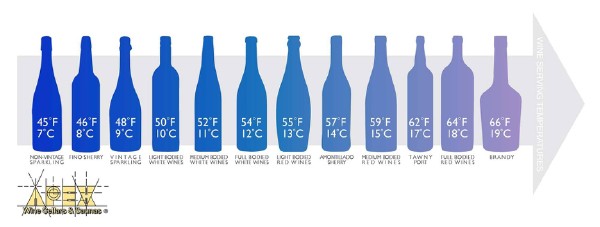Stocking Your Wine Cellar
The final paperwork has been signed, the construction crew has left and you finally have the wine cellar that you have always dreamed of having.
Now what? How do you go about filling all of those brand new wine racks? Here are some helpful tips for stocking your wine cellar with wine that you can enjoy for years to come.
First, it is important to understand that most wine is meant to be enjoyed shortly after you have purchased it. It may already be two or three years old and will not benefit from additional aging. In fact, many of these wines will begin to slowly deteriorate over time. However, there are plenty of bottles that should be aged and will be worth the wait. These wines will develop complex characteristics over time. How do you know whether or not a bottle of wine should be aged? Unfortunately, there is no definitive way to answer this question. There are, however, a number of factors that can be used as general guidelines.

Wine Characteristics
Characteristics such as tannins, acidity, and sugar level impact the aging potential for wine. Red wines with a high level of tannins tend to age well while white wines with high acidity levels usually make good candidates for aging. Over time, the tannins break down and the acidity mellows leaving the wine more complex than it had been when it was young. Additionally, wine with high levels of sugar such as port and sherry may reach their maximum potentials after decades of aging.
Vintage
The exact year that the wine was produced will play a large role in whether or not to add it to your cellar. It is possible to own two bottles of wine from the same vineyard, produced in different years that will be best enjoyed after a different amount of aging. Checking a vintage chart should give you a good idea as to whether or not you should cellar the wine or enjoy it now.
Varietal
Certain varietals tend to carry the necessary characteristics of wine that should be aged. Candidates for aging include: old world Rieslings, Bordeaux, Burgundy, fine Champagne, Brunello di Montalcino, Barolo, Barbaresco, fine Cabernet Sauvignon, and Port just to name a few.
Once you have your chosen wine in your cellar, it is important to make sure that the wine is being stored properly. The wine should not be exposed to damaging light and the wine cellar conditions should be kept at a consistent level. The conditions with a wine cellar should replicate the conditions within a wine cave. This means that wine should typically be stored at approximately 55◦F with 60%-70% humidity. A top of the line wine cellar cooling unit will allow you to store your wine in the perfect conditions.
Once you have your chosen wine in your cellar, it is important to make sure that the wine is being stored properly. The wine should not be exposed to damaging light and the wine cellar conditions should be kept at a consistent level. The conditions with a wine cellar should replicate the conditions within a wine cave. This means that wine should typically be stored at approximately 55◦F with 60%-70% humidity. A top of the line wine cellar cooling unit will allow you to store your wine in the perfect conditions.

Finally, wine is best enjoyed when served at its proper temperature. A high-quality thermometer, such as those made by Epicureanist, will help you ensure that your wine is ready to be served. The following chart is a general guideline to help you bring out the best in your wine.

Are you ready to begin building the cellar of your dreams? At Vinotemp, we can help you plan the perfect space in which to store your wine. Contact us today with our Contact Form.




